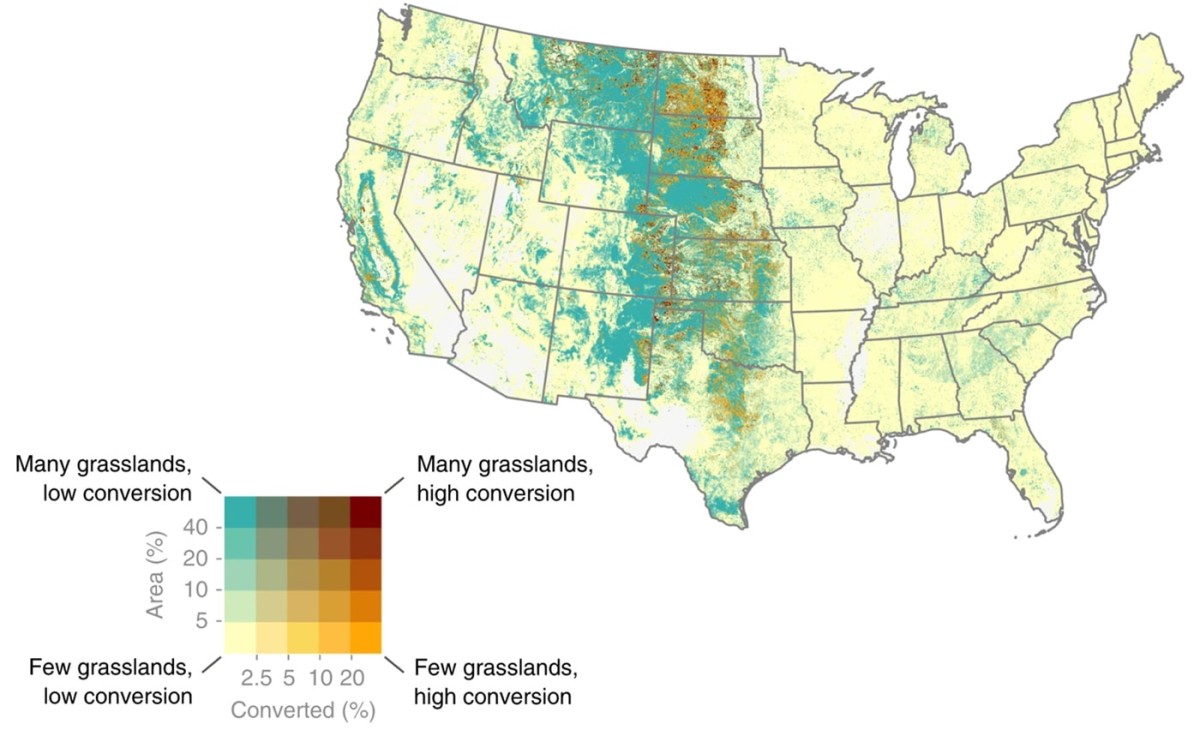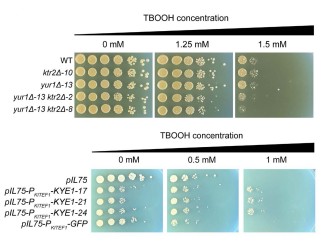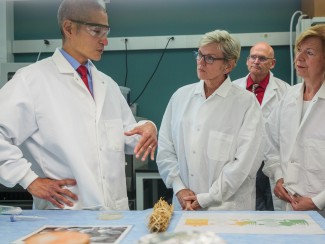
Bioenergy crops could provide an environmentally friendly alternative to less productive annual crops planted on recently converted farmlands
The Science
Widespread conversion of grasslands and other ecosystems into agricultural farmland for corn, soybeans, and wheat expanded U.S. cropland by more than one million acres per year between 2008 and 2016. Great Lakes Bioenergy Research Center (GLBRC) scientists found that most of these new cropland areas had lower food production than existing sites. This conversion also came at high environmental costs to pollinators, waterfowl, and native plant habitats.
The Impact
Many converted croplands were in arid climates and/or had steeper slopes than existing farmland, making them difficult to farm and more susceptible to soil erosion and runoff. While lower yield and additional environmental impacts could be further amplified by future cropland expansion, growing bioenergy crops like mixed perennials or switchgrass in these areas could mitigate impacts of land use change on wildlife. Since recently converted lands aren’t as productive as traditional food cropping systems, cultivating bioenergy feedstocks could provide alternative revenue sources for farmers, reduced competition with food production, and better maintenance of water quality due to soil fixation by root systems. Field-level locations of recently expanded, abandoned, and intermittently cultivated croplands identified in this research could thus be good candidate sites for growing cellulosic biofuel feedstocks.
Summary
Despite coinciding with periods of both high and low crop prices, the rate of conversion of grasslands and natural areas to agricultural land remained high between 2008 and 2016. Much of this new cropland could be characterized as marginal land due to erosive soils, poor drainage, and low soil nutrients and moisture relative to lands already in agricultural use. Using land models and year-over-year measurements, GLBRC researchers found that corn, soybean, and wheat yields in most of these tracts were lower compared to their counterparts on well-established farmland.
Marginal lands often provide some of the highest quality habitats for wildlife. Converting these areas to annual crops reduced resources for pollinators like monarch butterflies and disproportionately affected prime nesting sites for ducks and other waterfowl. This outsized environmental impact combined with lower yields suggests the benefits of growing annual food crops in these areas may not outweigh the costs.
Program Manager
N. Kent Peters
Program Manager, Office of Biological and Environmental Research
kent.peters@science.doe.gov, 301-903-5549
Corresponding Authors
Tyler Lark
Assistant Scientist, University of Wisconsin–Madison
lark@wisc.edu, (608) 890-3982
Holly Gibbs
Associate Professor, University of Wisconsin–Madison
hkgibbs@wisc.edu, (513) 720-2784
Funding
This material is based upon work supported in part by grants from the National Wildlife Federation and the Great Lakes Bioenergy Research Center, U.S. Department of Energy, Office of Science, Office of Biological and Environmental Research (award number DE-SC0018409); the Natural Resources Conservation Service of the U.S. Department of Agriculture (award number 96-3A75-16-032) via Ducks Unlimited; and by a National Science Foundation fellowship (award number DGE-1747503).
Publication
Lark, T.J., Spawn, S.A., Bougie, M., and Gibbs, H.K., “Cropland expansion in the United States produces marginal yields at high costs to wildlife,” Nature Communications 11, 4295 (2020). [DOI: 10.1038/s41467-020-18045-z]
Related Links
https://www.nature.com/articles/s41467-020-18045-z





